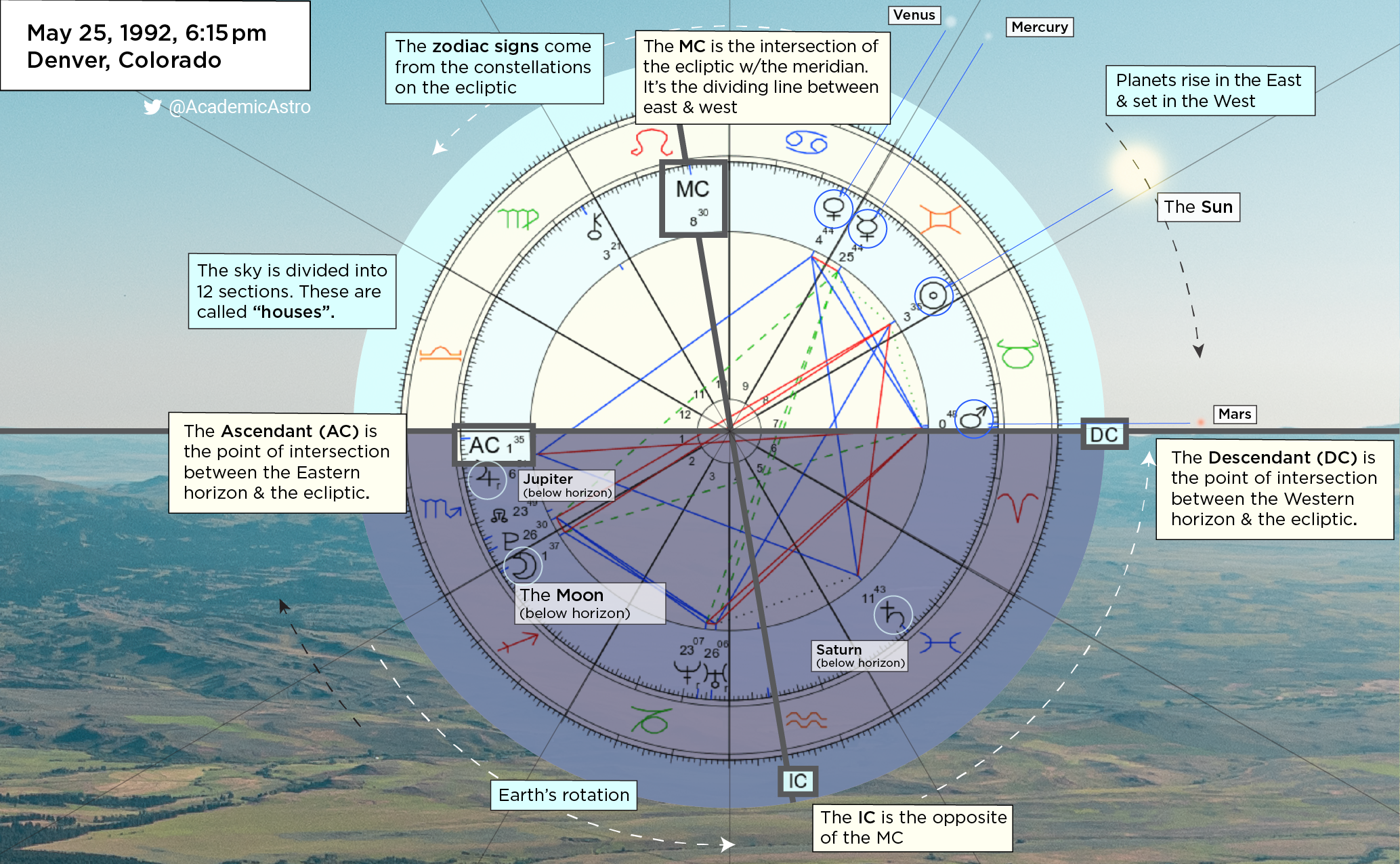In order to get the most value out of astrology, learning how to read a birth chart is critical. While it takes years to develop a deep understanding of the complexities of a birth chart, I’m here to explain the basics. This can be used as a foundation to help you begin your astrology studies.
The best place to start is astro.com (the extended chart selection). Begin by entering your data.
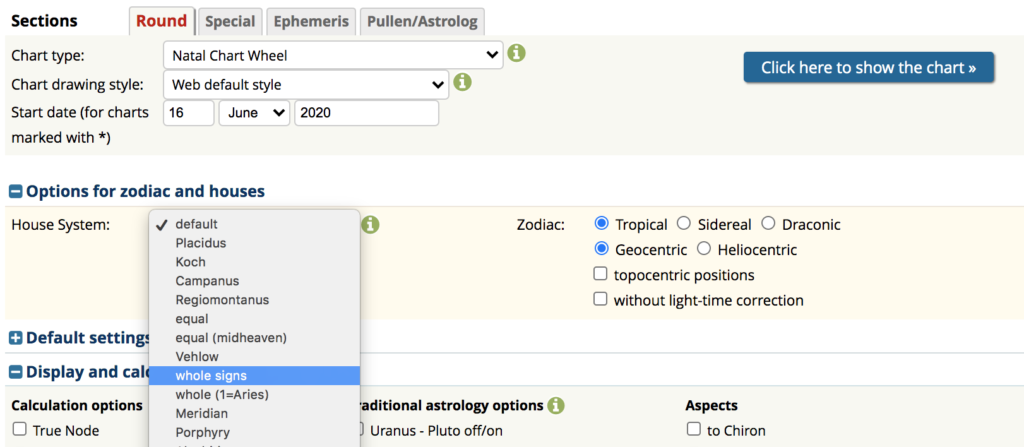
Under “Options for Zodiac and Houses”, select “whole signs” under “House System:”. For everything else, just use the default settings for now. Then select “Click here to show the chart” button.
When you first see your chart, you might be confused. It looks like a bunch of vague symbols and random lines.
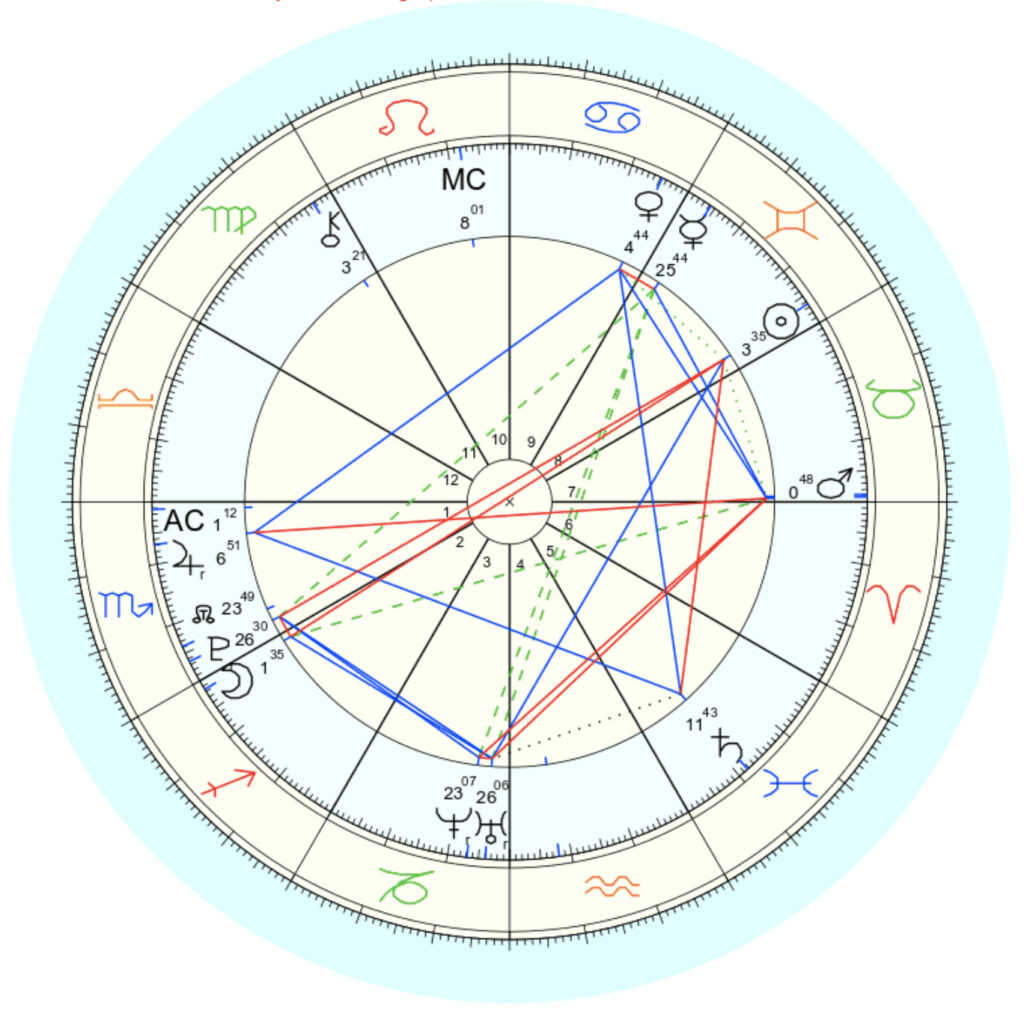
1. Planets
First, the small black glyphs are the planets. Each planet has a different function and role in a birth chart.
The planets that are visible to the naked eye are most important. These include the Sun, Moon, Mercury, Venus, Mars, Jupiter, and Saturn. I will address other planets, such as Uranus and Neptune, another time. The planets you should play the closest attention to are the Sun, Moon, and the Ruler of the Ascendant.
You may be wondering why the Sun and Moon are considered planets in astrology. In astrology, everything is based off of a geocentric perspective, even though we obviously know the Sun is at the center of our solar system. The word “planet” means “wandering star”. These are celestial objects that move over the ecliptic (the Sun’s apparent path going from east to west through the sky, based off of the Earth’s rotation), unlike the rest of the stars, which stay fixed in the night sky (ex: Sirius and Betelgeuse). The Sun, Moon, and other planets follow the same path, so they are all categorized together.
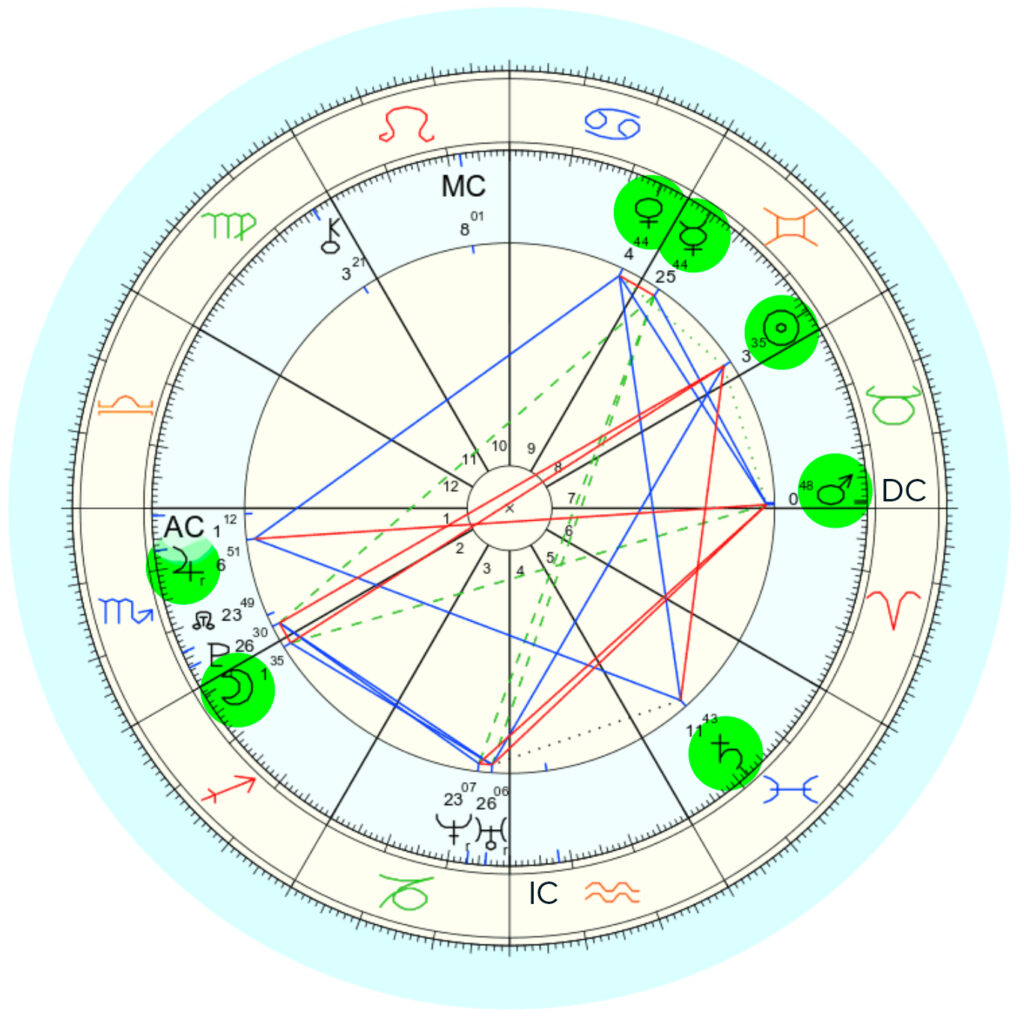
If you compare a chart to a movie of your life, the planets are like the actors. They take action and play different roles based off of the archetypes they represent.
Depending on the type of astrology you practice (psychological, traditional, horary, mundane, etc), the planets have slightly different, yet related functions. I’ll just focus mostly on what they would symbolize in natal charts in this post.

The Sun:
This is your general self-expression, ego, and conscious will.
When symbolizing other areas of your life, it indicates someone who is dominant, a leader, a father figure, a husband, a male, and/or a creative. People who embody the Sun archetype are confident, expressive, and bold.
It rules Leo (rulership will be important to keep in mind once you dive deeper into your studies).
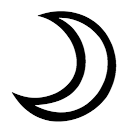
The Moon:
This is your unconscious mind, how you handle emotions, and your instinctual reactions. It represents where you find comfort and what makes you feel nurtured.
When symbolizing other areas of your life it symbolizes maternal figures, mothers, women, nurses, or your childhood. People who embody the Moon archetype are nurturing, intuitive, sentimental, moody, soft, and empathetic.
It rules Cancer.

Mercury:
This is your intellect and your communication style. It represents how you make connections with others, how your mind works, how you speak, and your learning style.
When symbolizing other parts of your life it can symbolize writers, speakers, teachers, siblings, messengers, travelers, or merchants. It also can represent all forms of transportation, letters, and electronic correspondences. It represents anything and anyone involving making connections—connecting intellectual ideas or connecting from one place to another. People who embody the Mercury archetype are intelligent, verbal, detail oriented, and enjoy debate.
It rules Gemini & Virgo.

Venus:
This represents desires, your love language, relationships, and aesthetic sensitivity. It represents what you need in romance, what you find valuable, and how you relate to others.
Venus symbolizes young women, sisters, girlfriends, artists, stylists, all things that are beautiful, luxuries, pleasure, the arts (paintings, music, etc), gifts, jewelry, kindness, friendships, sweet things, and decorations. People who embody the Venus archetype are accommodating, beautiful, and artistic.
It rules Taurus & Libra.
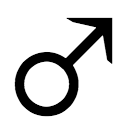
Mars:
This is how you assert yourself and go after for what you want. It’s how you handle confrontation, your drive, and how you express anger.
Mars also symbolizes conflict, young men, athletes, warriors, fighters, blood, knives, the military, iron, metals, cutting, hunting, fire, and heat. People who embody the Mars archetype are bold, aggressive, and combative.
It rules Aries & Scorpio.
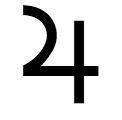
Jupiter:
This where you find higher knowledge, meaning, ethical values, personal growth, spirituality, and wisdom.
It also represents higher education, expansion, religion, spirituality, alliances, abundance, the law, philosophy, journeys, academia, honors, indulgences, and happiness. People who embody the Jupiter archetype are philosophical, wise, spirited, and generous.
It rules Sagittarius & Pisces.

Saturn:
This is how you find structure, what you need to work hard to achieve, where you feel a sense of responsibility, your capacity to be disciplined, and what burdens you.
It represents maturity, challenges, inhibitions, effort, delays, limitation, punishments, elderly figures, coldness, hard work, patience, restraint, pain, and seriousness. People who embody the Saturn archetype are pragmatic, restrained, and hard-working.
It rules Capricorn & Aquarius.
To develop a deeper understanding of the planets, check out this episode on The Astrology Podcast on Spotify (also available on YouTube and other places you get your podcasts). Also, a great resource and reference for each planet is this book.
2. Signs
The colorful glyphs on the outermost portion of the birth chart represent the signs (Aries, Taurus, Gemini, etc).
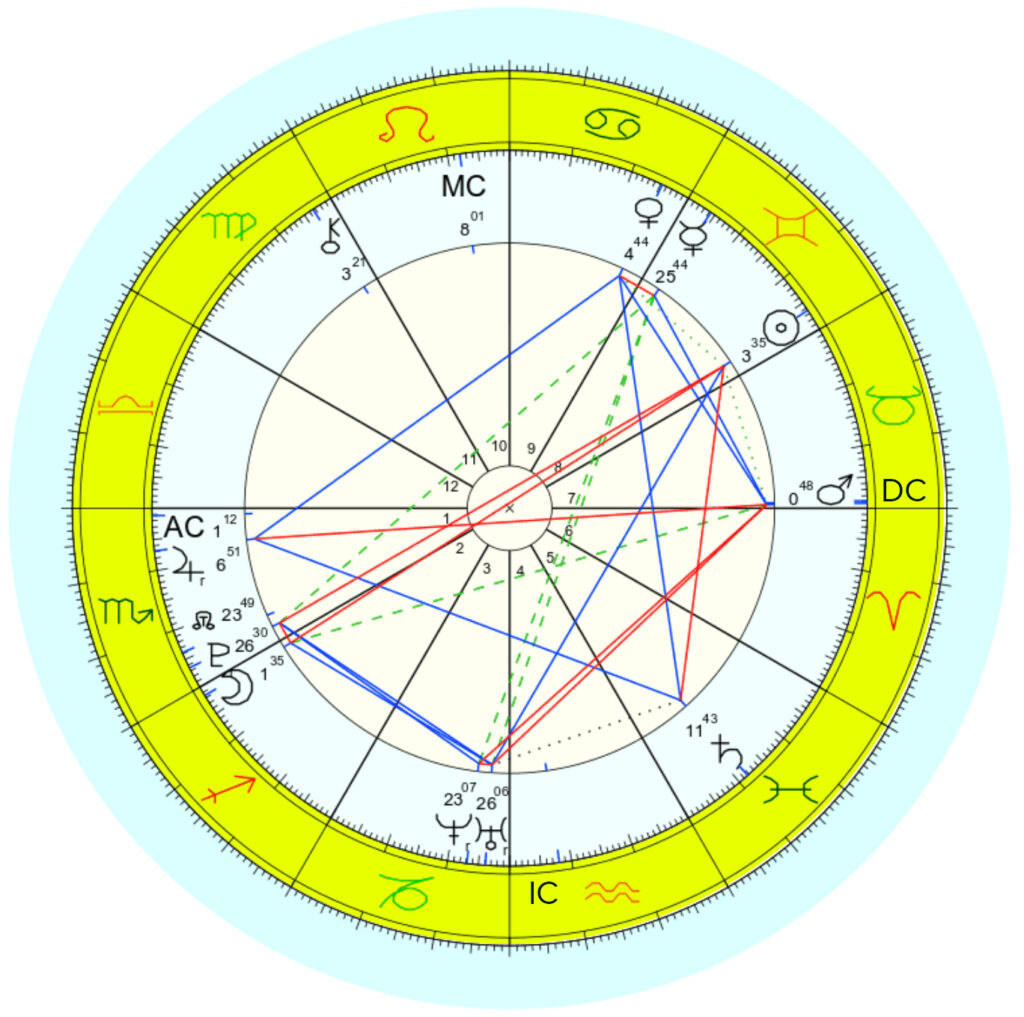
The signs describe or represent the mood of the planets. If you compare a chart to a movie, the signs are the personalities, interests, and styles of the actors.
Contrary to what many believe, a sign does not do anything: they have no power to act. They simply describe.
Your “Big 3” consists of the Sun, Moon, and Ascendant sign. These are are the signs that will be most noticeable in your identity and personality. What are yours? In the example chart, they are Gemini, Sagittarius, and Scorpio, respectively.
If you were born in the day (the Sun is above the horizon), the Sun will be extra important. If you were born at night, (the Sun is below the horizon) the Moon will be extra important. In the example chart, the Sun is above the horizon, so it is a day chart.
Here is a mini cheat sheet I made for each sign. Save it for future reference.
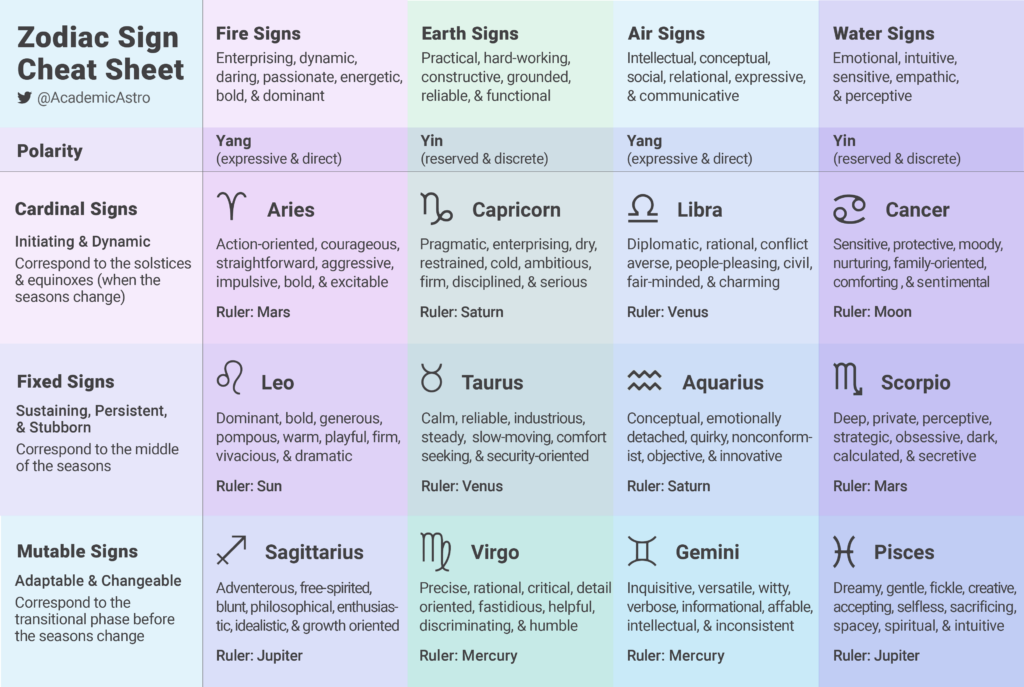
In the example chart, the individual has Venus in Cancer. This means that she is sentimental, nurturing, and protective (Cancer traits) when connecting with others in relationships (what Venus does).
Apply this same logic when looking at the other planets I listed in the previous section.
A great resource and reference for each planet in a sign is this book.
To learn about each sign in depth, check out The Astrology Podcast. Here is the Spotify link and YouTube link for the first 6 signs (Aries, Taurus, Gemini, Cancer, Leo, and Virgo) and here is the Spotify link and YouTube link for the second 6 signs (Libra, Scorpio, Sagittarius, Capricorn, Aquarius, and Pisces).
Last, CafeAstrology.com has some decent information about each planet in a sign.
3. Houses
The birth chart is divided into 12 sections. Each section represents a different area of life. If you compare a chart to a movie, the houses are the settings of the movie.
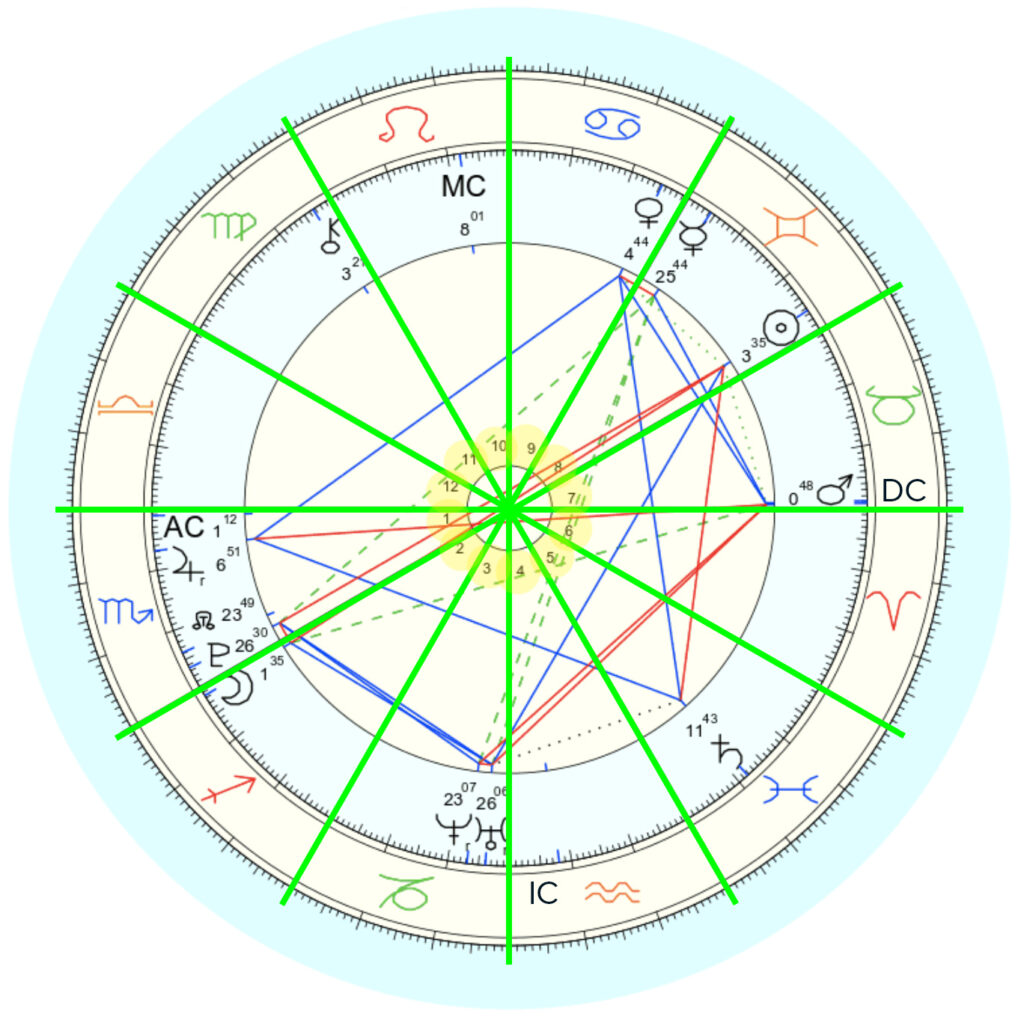
For each house one or a combination of the following topics show up.
House 1
Your identity, appearance, vitality, and/or personality
House 2
Personal finances, assets, and/or ways you support yourself
House 3
Communications, transportation, writing, speaking, siblings, extended relatives, travel, learning, and/or your local community
House 4
Your roots, parents, family lineage, home, and private life
House 5
Children, art, creativity, romance/sex, recreation, and/or entertainment.
House 6
Health, sickness, injury, routine, responsibilities (ex: chores, paying bills, your day job, etc), service, subordinates (ex: dealing with employees or being an employee), medium and small sized animals, and/or weaknesses.
House 7
Marriage partner, business partner, best friend, and/or an open enemy (basically anyone you consider your “other half”)
House 8
What you owe (ex: debts & taxes), what is owed to you (ex: inheritances), other people’s resources, themes related to mortality, death, anguish, obsessions, &/or psychology.
House 9
Higher knowledge (ex: religion, philosophy, &/or universities), beliefs, spirituality, travel, other countries, foreigners, education, publishing, and/or basically anything involving expanding your horizons.
House 10
Your professional reputation, what you are most known for, your job, and/or your contribution to society.
House 11
Friends, alliances, networks of people, audiences/fans, and honors.
House 12
Isolation, suffering (or helping those that suffer), contemplation, mental health, self-sabotage, sacrifice, imprisonment, loss, getting lost, activism, unseen enemies, unseen worlds (ex: spirits), large animals, and/or anything that makes you feel helpless.
For example, the native has Venus in Cancer in the 9th house. This means she experiences love and pleasure (Venus things) when traveling abroad, exploring spirituality, meeting foreigners, and/or in higher education (9th house things).
To develop a deeper understanding of the houses, check out this episode on The Astrology Podcast on Spotify (also available on YouTube and other places you get your podcasts). This book is also very helpful regarding the houses.
The Angles
The angles are the most personal placements in your birth chart.

The Ascendant (aka: the Rising sign)
This is the most important and personal part of the chart (you must have an accurate birth time for this). It’s the exact place where the Sun’s path crosses the horizon in the East (far left part of the chart). It’s closely intertwined with your identity and how you approach life. For this example chart, the native has a Scorpio rising. So she will navigate life in a secretive and strategic manner.
The MC (aka: the Midheaven)
This is at the top of the chart (usually in the 10th, but sometimes in other houses too) is another important personal point. It represents the height of one’s career, reputation, and contributions to society. For this example chart, the native has a Leo MC. This means she will likely be known for her dominance and leadership in the professional world.
The Descendant
This is the opposite of the Ascendant. It represents how you experience your “other half”. For this example chart, the native has a Taurus Dsc. So she will likely find a partner who is practical and security oriented (Taurus traits).
The IC
This is the opposite of your MC. It represents your private life, past, and parents. For this example chart, the native has an Aquarius IC. So she likely has parents who are progressive and nonconformist.
Bonus (come back later if this is too confusing): Rulership
To get the most out of the houses, understanding rulership makes a huge difference. The planet that “rules” a house dictates the outcome of that topic in a person’s life. See the sign cheat sheet for what sign is ruled by what planet.
For example, in the example chart the 1st house, the house that represents her personality and identity, has the sign of Scorpio on the outside of it. Scorpio is ruled by Mars. Thus, Mars in Taurus in the 7th house represents this person. Combine these themes and you get a person who asserts herself (what Mars does) in a stubborn and calm way (Taurus traits) when dealing with partners (7th house topics). See my post about the ruler of the ascendant for more details.
You can use the above logic with any house. For example, if you want more information about this person’s parents, look at her 4th house. Her 4th house is ruled by Aquarius. Saturn rules Aquarius and is in Pisces in her 5th house. This would make me think her parents could have been conservative, strict, pragmatic, and/or hard working (how Saturn acts), in a way that is selfless and sacrificing (Pisces traits), but still managed to build a fun and creative environment for her to grow up in (5th house themes).
4. Aspects
Aspects are the red and blue lines in the center of the birth chart. They are the interactions and relationships between the planets. Regarding the movie analogy, they represent the dialogue or plot.
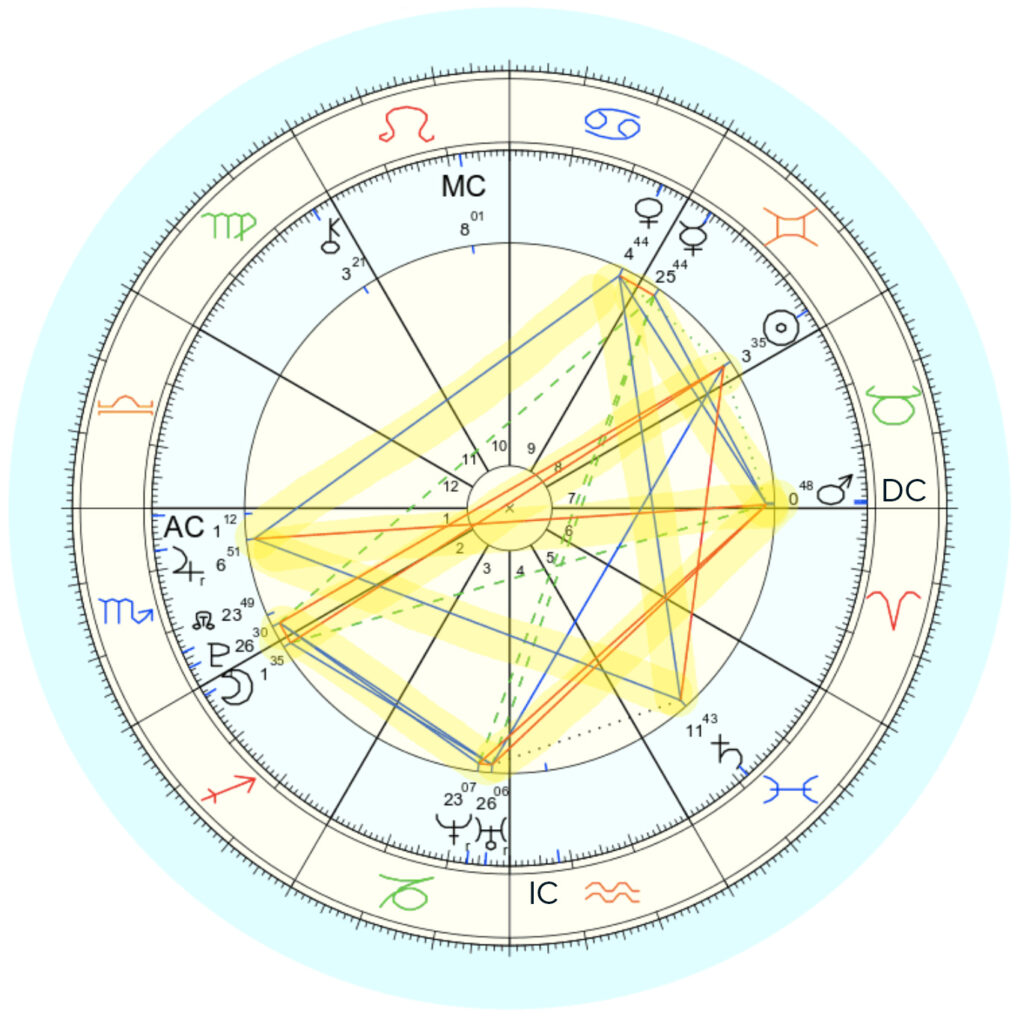
Planets that are 0°, 60°, 90°, 120°, or 180° from one another are interacting.
- 0° aspects intensify the combination and sign of the planets. They’re called conjunctions.
- 60° aspects are nice and friendly interactions where the planets and signs work well together. These are sextiles.
- 90° aspects are difficult and tense aspects where the planets and signs conflict. These are squares.
- 120° aspects are supportive and really helpful interactions where the planets enhance each other. These are trines.
- 180° are difficult where the planets oppose one another. This creates a difficult challenge. These are oppositions.
Combine the actions of each planet to understand the aspect.
Ex:
The Sun (represents the ego and self expression) is square (approximately 90° angle, so it is a difficult interaction) Saturn (represents inhibition, restriction, and discipline). This results in someone who may struggle (Saturn square) with confidence and expressing herself (what the Sun wants to do). Saturn challenges the Sun’s expression.
Now You Have the Birth Chart Basics
Being able to effectively combine all of these factors in astrology is the essence of the practice.
Now that you know the basics, you can look into more advanced resources that can help you get to the next level. Start collecting birth times and paying attention to people in your life’s chart. Compare and contrast them all. Check out books and podcasts. Over time, you’ll get the hang of it!


